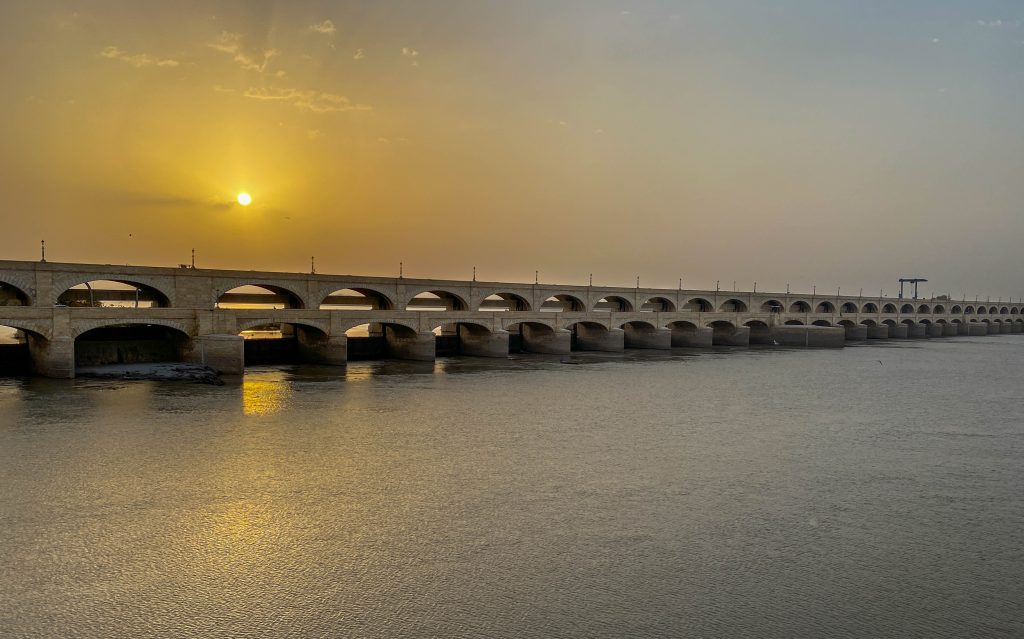KARACHI, 7 October – The “Restoration and Upgrade of Sukkur Barrage” project, which is expected to cost Rs. 34 billion to complete, was started by the Government of Sindh with the assistance of the World Bank.
The project’s contractor is M/s China Road & Bridge Corporation/Hubei Shuizong Water Resources and Hydropower Construction Co. Ltd. (CRBC-HBSZ) (J.V) for the execution and completion of the works and the correction of any flaws. The project’s implementation body is the Sindh Barrages Improvement Project (SBIP), which is run by the government of Sindh’s irrigation department. The 90-year-old Sukkur Barrage will live another 30 years thanks to the initiative.
Imran Tunio, the technical officer for the SBIP, stated that the project would be finished by CRBC-HBSZ in four years and that an advanced study on the building of the barrage will also be carried out.
According to Mr. Tunio, the project entails dredging, desilting of the left and right canals, development of the system, enhancement of the surveillance and monitoring system, mechanical component development, rehabilitation and modularization of the structure, and other elements.
Six of the 66 gates at the Sukkur Barrage have been replaced, while 10 have sustained total damage. The proposal calls for the construction of the 50 gates to begin in October.
One of the most crucial and strategically significant elements of the irrigation system for the Indus basin is the Sukkur Barrage. Sukkur Barrage, which is about 170 kilometers downstream of Guddu Barrage and supplies water to seven sizable canals on the left and right banks with a total command area of about 3.2 million hectares and an annual agricultural production worth about US$2.29 billion, is regarded as Sindh’s lifeline because it controls a region with a command area of about 3.2 million hectares. The investigation showed that the 1932-built Sukkur Barrage required renovation and upgrading, particularly in relation to its ability to divert enough water to the seven irrigation canals and pass through floods.

